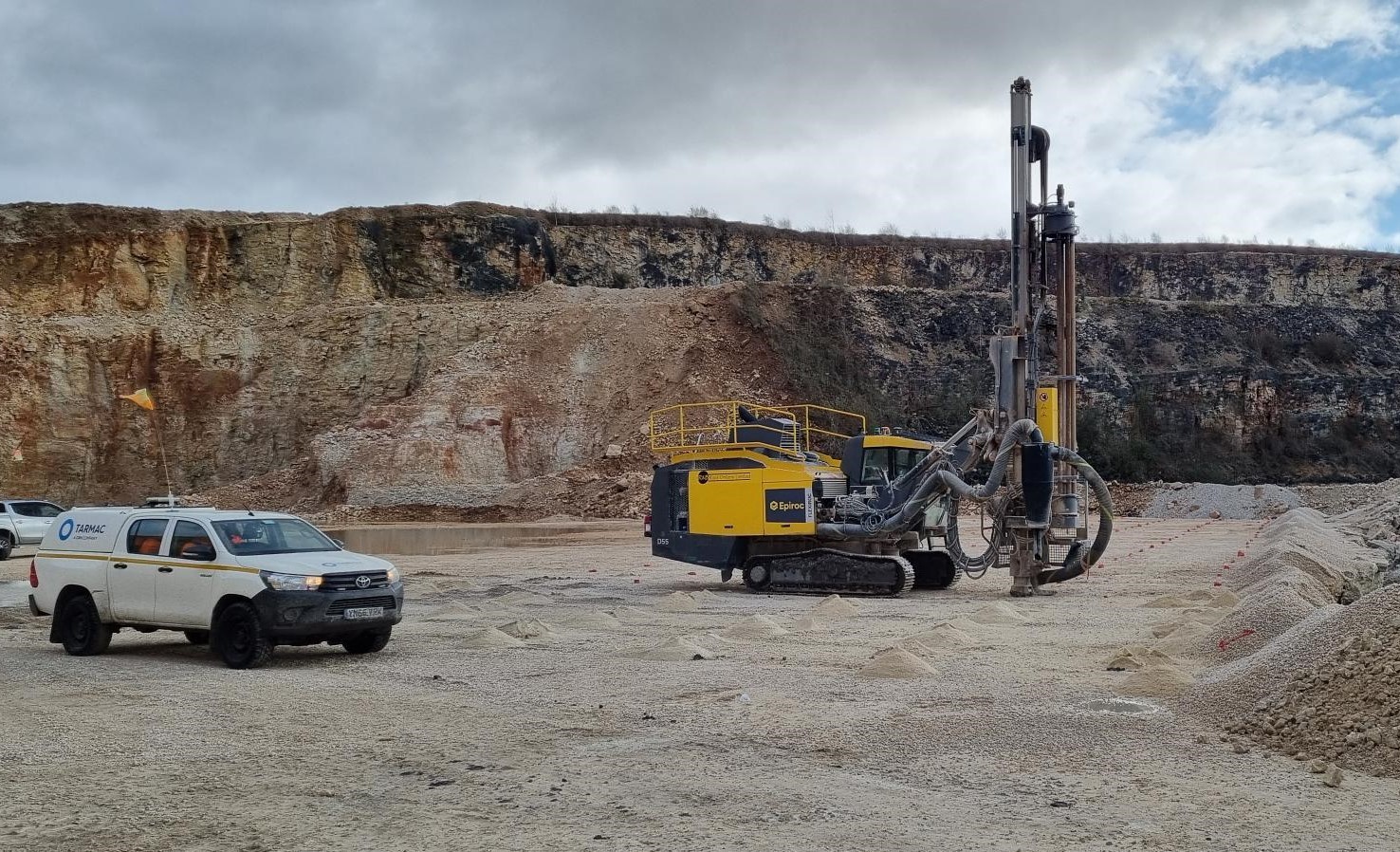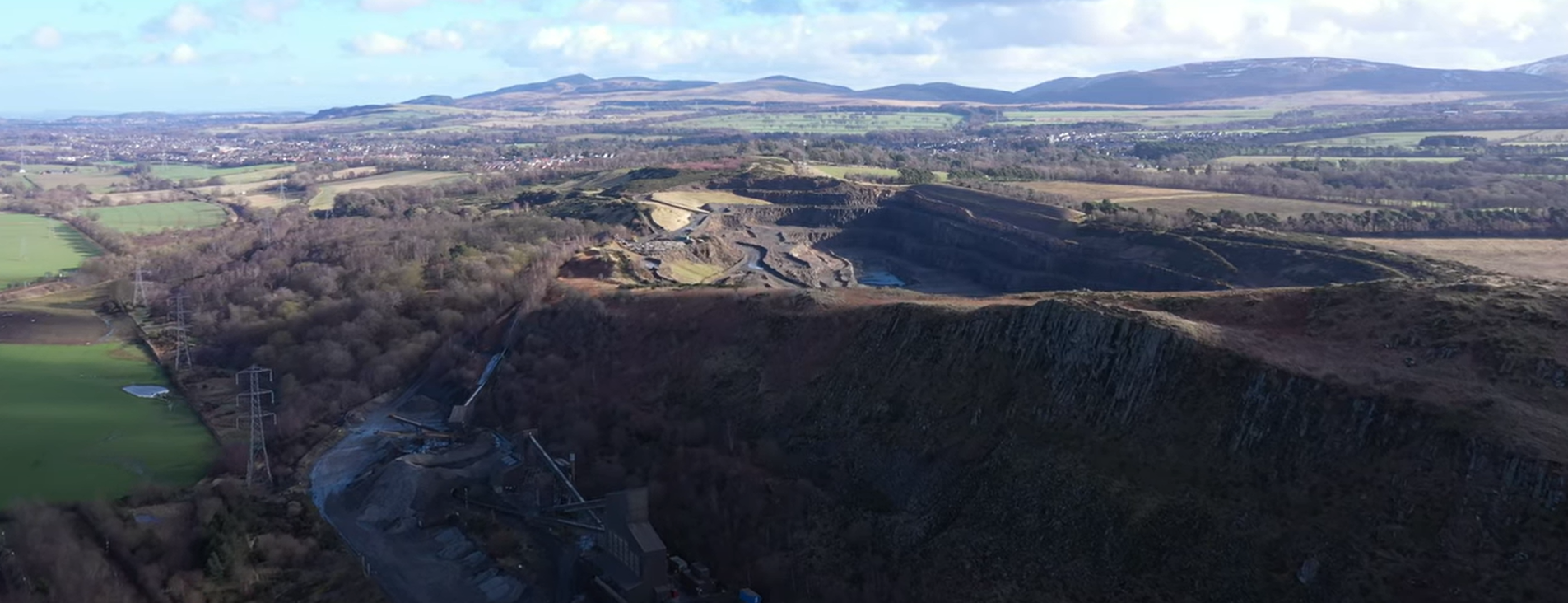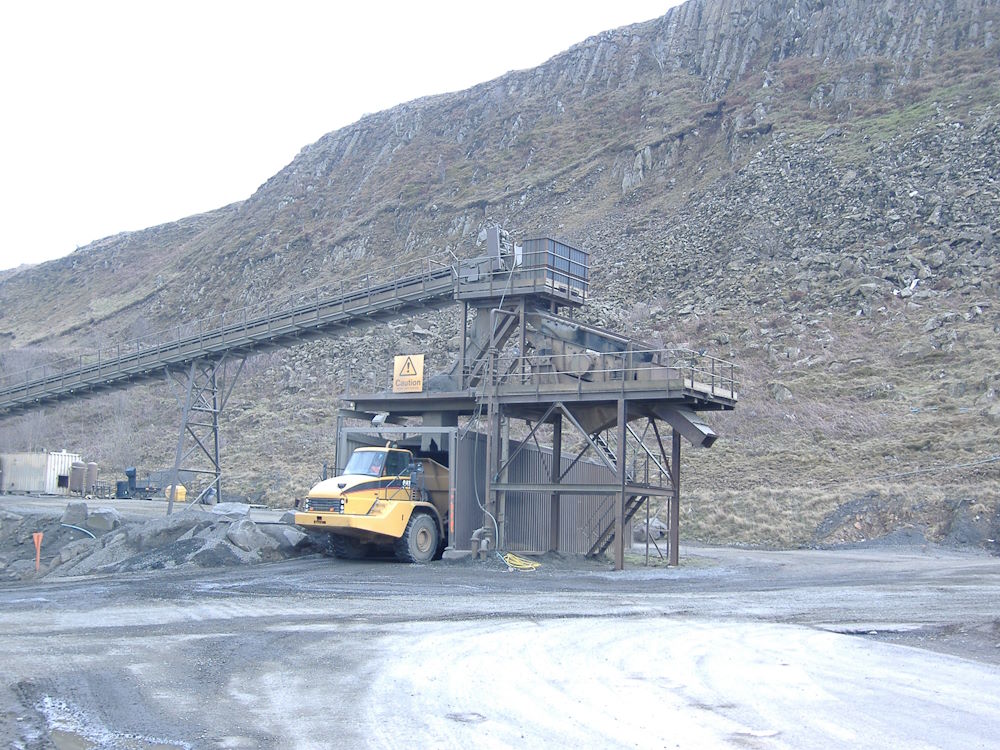Planning Extension Proposal
Ravelrig Quarry
Excavation and rock extraction
To uncover the rock, it is necessary to remove or “strip” the soil, clay, and mudstone/sandstone sediments known as “overburden”. The soil would be used to form temporary mounds between the quarry and the A70, then used later in restoration process. Clay and other materials would be placed at the other side of the quarry, reinstating the slope of Dalmahoy Hill and creating more gentle slopes in the restored quarry area. This would be done in two stages, each lasting up to six months; one at the start and another after c.5 years.
Rock would be extracted from the zone coloured in pink on the plans. This would be done using the same technique as at present: drilling, blasting, then transporting to the existing processing plant. All plant and activity would continue to remain below the horizon and out of sight over an estimated working period of 20 to 25 years.

Distance to Neighbours
The proposed quarry extension will not bring operations closer to Balerno, with two intervening fields remaining untouched. It will move slightly closer to a few individual properties towards the south including Garden Cottage, Bankhead House & Coach House.
The table below shows change in distances to the quarry edge (which will see some brief activity at the start) then the main rock extraction area which will contain activity over the long term. After the initial stage, nearly all activity will be out of sight below the horizon
| Current | Proposed | |||
| Property | Distance to quarry edge | Distance to rock extraction zone | Distance to quarry edge | Distance to rock extraction zone |
| Hannahfield | 450m | 480m | 450m | 550m |
| Cassidy Wynd | 660m | 670m | 660m | 720m |
| Garden Cottage | 570m | 610m | 430m | 530m |
| Bankhead House/ Coach House | 730m | 750m | 620m | 720m |
The map is interactive and you can zoom in and out. The Buffer around the houses is 250m.
Modelling of the Quarry excavation
We have prepared a video showing a 3d model of the quarry process including removal of overburden and rock followed by restoration of the quarry.
Aggregates, Climate Change and Sustainability
Our towns, cities, and entire infrastructure is made from mineral products like aggregates, concrete,asphalt, and other materials which come from the ground.
Of all the mineral products used in the UK, around half go to publicly funded projects for schools, hospitals and social housing, roads, railways, ports and airports, utilities infrastructure and flood defences. The other half goes to the private sector for private housing, retail and commercial development, and sports and leisure facilities.
Natural resources, such as the rock quarried at Ravelrig, need to be sourced, produced and used as sustainably as possible. The proximity of Ravelrig quarry to the City of Edinburgh and surrounding road network means it can supply local projects easily and in a more environmentally friendly way than transporting materials from other parts of the country.
The plant machinery at the quarry is also fully electric which provides greater efficiency and energy saving than traditional diesel-powered machinery Due to this Ravelrig is one of the most environmentally friendly Tarmac quarries within the UK.
Where a quarry is located is determined by where the required aggregate can be found. This means quarries can only be situated in certain locations, depending on the geology of the area. Where possible, it is more environmentally friendly to extend an existing quarry that has remaining mineral reserves, like there are available at Ravelrig, than to open a new quarry in a different location.

Dust and noise mitigation
Dust
Quarries can produce dust, so we take precautions to keep this to a minimum, in line with planning conditions. Both permanent and mobile water sprayers are used at Ravelrig to dampen dust and there is no history of issues or complaints from neighbours or the local community.
Noise
The main source of noise comes from the machine that crushes the rock, the loading of dump trucks and road vehicles. However, the noise from the quarry is limited due to the distance and landforms between our neighbours and the site.
If planning was granted for the extension, the crushing machinery would remain in its current position, meaning there would be no change from the current noise levels. The dump trucks would still be loaded at a similar distance within the quarry, where the quarry walls stop the noise from travelling.
During the initial phases of the extension, there could be some noise as we remove the soil and clay at the surface. Planning condition would apply, as they do now, to limit this noise to an acceptable level.

Blasting
Blasting usually takes place about once a month. This causes the ground to vibrate which we limit through the careful design.
Planning conditions currently in place at Ravelrig impose strict vibration limits. All blasts are monitored, with all previously readings recorded being below the permitted level.
Another effect of blasting relates to the movement of air, with a momentary change to local air pressure. This can sometimes be felt inside buildings, commonly with a rattle of windows. Although this change in air pressure cannot cause damage to buildings, it can be concerning and easily confused with vibrations. We have been working to limit this effect by analysing the data available to us after each blast.




